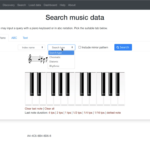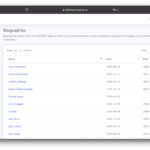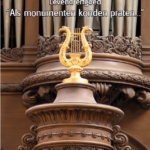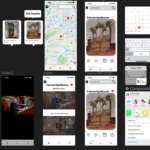Access
Perceiving music with your body
Pilot summary
The ACCESS Pilot will develop new ways to enhance participation and engagement in music: for the general public; for those with hearing impairments; and for those with physical disabilities. Two areas of music considered particularly deep by musicians can create challenges for participation by beginners and non-experts: namely polyphonic rhythm and tonal harmony.
Crucially, both areas involve manipulating and gaining insight into, multiple musical streams and how they interact and behave as an integrated whole. In the case of rhythm, particular challenges are posed for those with hearing impairment, and in the case of harmony, for those with physical impairments. Thus, the ACCESS Pilot includes two strands with commonalities and contrasts. The essential commonality is that both strands aim to enhance participation and engagement in music for the general public. The contrast is that whereas one strand, focusing on polyphonic rhythm, aims to widen participation and integration for the hearing impaired, the other strand, focusing on tonal harmony, aims to find new ways to widen participation for the physically impaired.
In this way, ACCESS will pilot innovative new technologies aimed at integrating and including people with different abilities in music participation, facilitating deeper engagement with music for all. The ACCESS Pilot will combine expert facilitators from the Stables Music Theatre, and new technologies from the Open University’s Music Computing Lab. We will run a series of workshops at The Stables -- an award-winning music venue, festival organiser, and centre for learning and participation. The workshops will pilot the use of two principled interactive music technologies developed at The Open University’s Music Computing Lab: the Haptic Bracelets (for polyphonic rhythm); and Harmony Space (for tonal and modal harmony). In partnership, we will run public workshops at the Stables.
Full description
Rhythm Workshops
These workshops will use haptic bracelets (see below) both to support the initial learning of rhythm patterns and subsequently to support playing interlocking rhythms with other musicians. The haptic bracelets (‘haptic’ means communicating by sense of touch) are self-contained lightweight wireless bracelets for wrists and ankles designed at the OU. They contain processors, motion sensors, fast wifi links and rapidly-acting powerful haptics (vibrotactiles). Depending on the musical activity, participants may wear four bracelets at once (wrists and ankles), or for other activities just one or two. Motion sensors make it possible for one (or several) participants to feel in real-time in the appropriate limb what each limb of another player is doing. It is also possible for several players to be coordinated using a recorded ‘haptic score’, or for haptic recordings to be played back slowed down.
The haptics can be arranged to support two main percussion technique approaches – stick drumming and hand drumming - and the tone variation and patterns needed in each approach. In hand drumming ‘feel’ and muscle memory including hand shape are key to delivering correct tone. In ‘stick’ drumming (e.g., on drum kit) usually different tones are delivered on different drums or cymbals, while sticks still require some feel and muscle memory to reproduce tone variation. With haptic support, each tone can be related to a haptic signal, supporting participants to learn patterns consisting of different tones through feel, building up ‘muscle memory’ by repeated practice following the haptic signal, with start/stop/variation under control of another participant or teacher.
After the initial technical setup workshop, both rhythm workshops will explore two scenarios – playing percussion in a pop/rock/Latin band, and a drumming-only group. In playing with other musicians, deaf or hearing-impaired percussion participants face barriers around timekeeping, signaling and responding to signals to change some aspect of the music, essential to ‘interlocking’ more complex multi-player rhythm, as well as challenges in changing tempo. Haptic devices can be used to take tempo lead from one musician and change in real time to enable deaf or hearing impaired participants to follow changes. In music genres with Latin or African influences it will be possible to explore ‘controlling’ patterns such as 3/2 or 6/8 clave, rather than metronomic pulse or simple count. Haptic signals will support both the learning of these patterns and the interlocking with other players.
Harmony Workshops
Harmony is widely considered to be one of the hardest parts of music to master and is often taught symbolically using algebra-like notations. By contrast, Harmony Space exploits cognitive theories of music perception to represent harmonic sequences in a principled way as physical pathways in 3D space. Harmony Space allows beginners to control and become familiar with paths representing songs much as one would explore and navigate through physical space. Harmony Space allows navigation to be carried out collaboratively by a group using simple movements to achieve complex effects. This aspect of Harmony Space will be used to fully integrate physically impaired and non-physically impaired participants. Depending on the musical activity and participant, this can be done with phones, laptops switches or dance mats and projectors. The workshops will work with rotating groups of three or four participants to use harmony space as a collaborative instrument to play chord sequences. The whole group will collectively compare several chord sequences looking for similarities, differences, and musical effects. The group will then use ideas gained to explore contrasting variations of the existing songs.
Pilot leader:
Simon Holland





